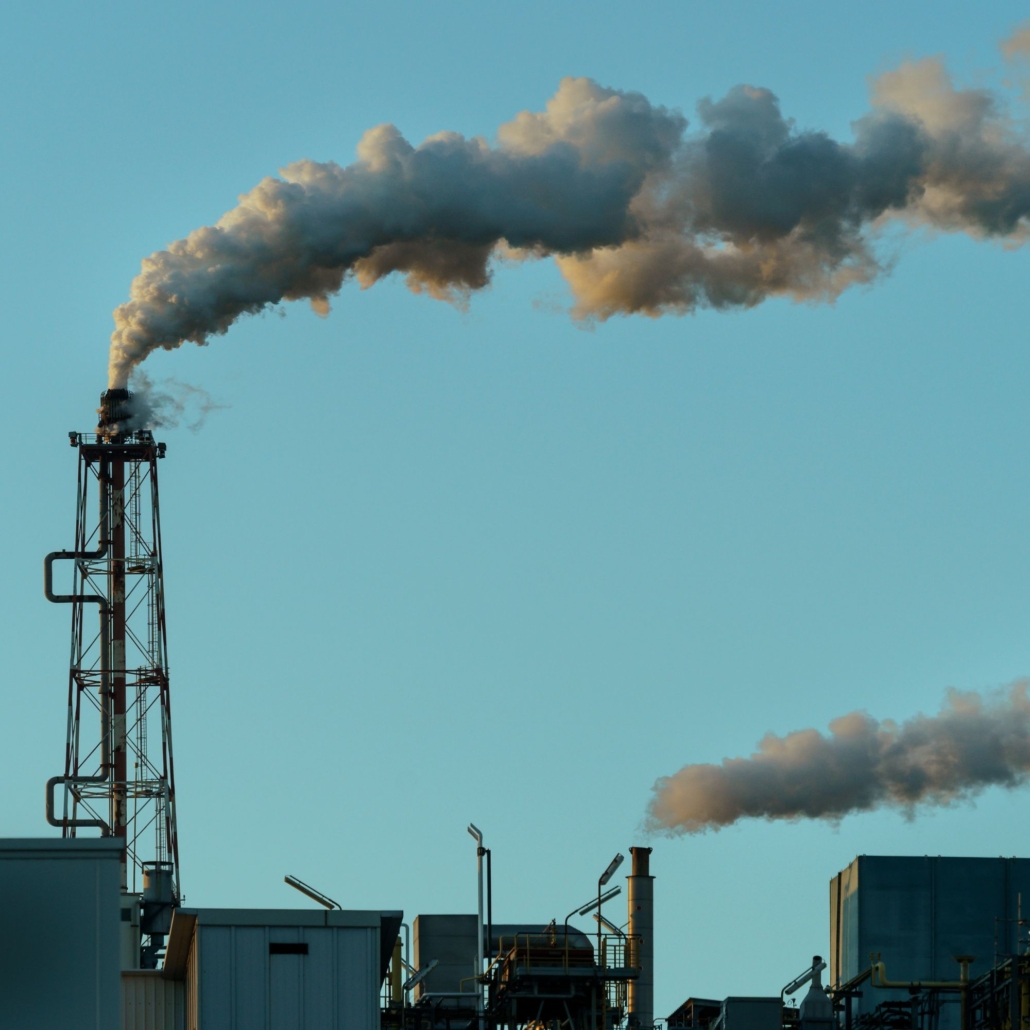Greenhouse Gases
Objectives
- Define greenhouse gases and provide examples.
- Explain the impact of greenhouse gases on the environment.
- Explain the role of greenhouse gases on climate change.
- Explain the link between greenhouse gases and ocean acidification.
- Identify sources of human impact on the environment from chemical disposal/production.
- Identify potential ways to limit the impact of greenhouse gases.
- Apply basic chemistry knowledge to a real-world situation.
- Determine if a source is reliable.
- Calculate the density of an object.
- Stoichiometrically determine the molar relationship between two compounds.
Related Textbook
Before beginning work on this assignment, please read section 13.11 on Carbon Dioxide and Climate Change.
Introduction
The combustion of fossil fuels (coal, natural gas, and oil) for energy, transportation, and some industrial processes emits carbon dioxide. Below is a chemical equation illustrating the combustion of octane, C8H18, a fossil fuel that is a component of gasoline.
C8H18(l) + O2(g) → CO2(g) + H2O(g) + heat
The resources below explain what a greenhouse gas is, how they are formed, their impacts, and how to limit the production of greenhouse gases. Review these resources to learn more about greenhouse gases.
- Information on greenhouse gases from the Environmental Protection Agency (EPA, 2020)
- The Chemistry of Vehicle Emissions Reduction & The Volkswagen Scandal (Brunning, 2015)
Causes and Effects of Climate Change by National Geographic
Assignment
Answer the following questions using the information provided in the assignment introduction, your textbook, and the concepts we have learned in this class. Submissions can be typed or handwritten. Be sure to format subscripts and superscripts appropriately. Upload your completed assignment to the “Greenhouse Gases Assignment Folder” on Brightspace. This assignment is worth 25 points.
- What are the four major greenhouse gases? How is each gas produced? (4 points)
- What are two specific ways greenhouse gas emissions can be reduced in industry? (2 points)
- What scientific data links carbon dioxide, a greenhouse gas, to climate change? (2 points)
- In your own words, define ocean acidification. (1 points)
- How does carbon dioxide cause ocean acidification? (1 points)
- Balance the equation for the burning of octane to produce energy. What type of reaction is this? (3 points)
C8H18(l) + O2(g) → CO2(g) + H2O(g) + heat
- What are 3 ways cars are designed to control greenhouse gas emissions? (3 points).
- Explain what a nitrogen oxide is. What are the three nitrogen oxide compounds? Which are dangerous to humans and/or the environment? (4 points)
- Is the source on The Chemistry of Vehicle Emissions Reduction & The Volkswagen Scandal (linked above) reliable? Provide three specific pieces of evidence to support your conclusion. (5 points).
References
Brunning, A. (2015). The Chemistry of Vehicle Emissions and the Volkswagon Scandal. Compound Interest. https://www.compoundchem.com/2015/09/30/vehicle-emissions/
EPA. (2018). Household Carbon Footprint Calculator. Environmental Protection Agency. www.epa.gov/ghgemissions/household-carbon-footprint-calculator.
EPA. (2020). Overview of Greenhouse Gases. Environmental Protection Agency. www.epa.gov/ghgemissions/overview-greenhouse-gases.
National Geographic. (2017, Aug 28). Causes and Effects of Climate Change [Video]. YouTube. https://youtu.be/G4H1N_yXBiA?si=e4v-z2hi-yHEzI2E
This page was created on February 15, 2023, and was last updated on August 15, 2024.
©2023 Catherine Haslag. All Rights Reserved.

